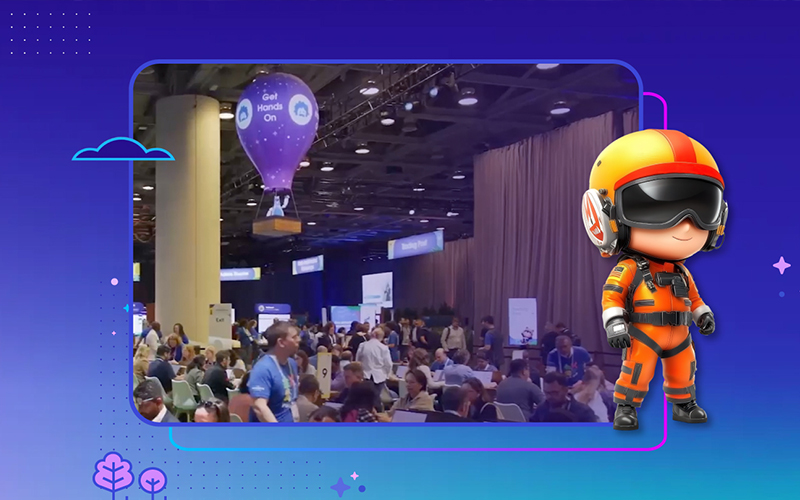
At CodeScience, we’ve helped build 10 percent of the apps on the Salesforce AppExchange. Each of these client engagements has helped shape our deep, nuanced knowledge of the Salesforce ecosystem. As one project finishes, meaningful learnings and wisdom from the completed project are incorporated into the next.
The result? A product development approach that is time-tested, as well as a recipe for partnering with ISVs that is growth-oriented and built around intent.
Referred to as “moving slow to go fast,” our product development philosophy forms the foundation of our successful client engagements. In short, moving slow to go fast is the product management philosophy that ensures strategic alignment with our clients and allows us to mitigate product development challenges before they happen.
This blog is the first in a series we’re producing on how to successfully build a business on Salesforce, including alignment across business goals, your product roadmap, your feature matrix, and how to ensure adjustments to any portion of these don’t delay your launch.
The Recipe for Successful Partnership
If there’s a single absolute truth about working as a Salesforce PDO, it’s that success in the Salesforce ecosystem truly comes as the result of strong alignment between the PDO, Salesforce, and our client. Why? Because Salesforce can be quite complex — and when added to the challenges of verifying a problem, scoping a solution, building the product, and launching on the AppExchange, there are countless ways product strategy can stall or fall off track.
First and foremost comes the task of shaping and creating the final product. At each and every stage of this process, there are clearly defined responsibilities for CodeScience and our partner ISVs. Let’s take a closer look at the steps for our product development “recipe.” Each step requires key stakeholder involvement on the client-side and for CodeScience.
1. Problem Verification and Visioning
This stage of product development clearly articulates how a AppExchange product will solve their customers’ challenges. At this point, executive and product management leaders need to identify who they want to sell to and the key challenges and pain points to solve. CodeScience brings the expertise for how to build a scalable product as quickly as possible.
2. Solutioning
Also known as the Discovery phase, this is where we live and breathe “move slow to go fast.” A key deliverable of this stage is forming a client leadership team capable of defining the product strategy and establishing a plan to test it with prospective customers.
3. Build
This is where the careful planning in the Solutioning stage pays off. When the rubber meets the road in the Build stage, the ISV team is equipped to make key decisions, build demos, test with beta users, and gain early adopters, while CodeScience maintains all aspects of creating the product.
We Have Liftoff
Once a new product is built, the path to the AppExchange is only half complete. In our Chief Product Officer’s Guide to Winner as a Salesforce Partner we released earlier this year, CPOs from leading Salesforce ISVs share their insights about building for the AppExchange. Byron Jones, VP of Product & Partnerships at Optimizely, summed up the many challenges of releasing a Salesforce product:
“Working with Salesforce, you have to consider not only the market and the demands but also the people side of things and the sheer complexity of the organization. In a previous job, I built rockets for NASA. Navigating Salesforce might be more complex. You have to be able to communicate the vision of the value that you’re trying to bring to the world and do that in an effective way that other people buy into it too and are able to come along on that journey.”
And this only represents a small piece of a much greater challenge. To succeed, ISVs not only have to create engaging solutions that delight end-users, but they must also invest time in building meaningful relationships with Salesforce too. Taking the time to align with our clients means we at CodeScience are better able to drive success in both product building and success within the Salesforce ecosystem post launch.
Ensuring Product Agility
Today, product development cycles are hyper-focused on speed. The faster you can get to market, the faster you can start making money, right? Well, not so fast. There’s a difference between investing time in developing a strategy that supports moving quickly and merely working fast for the sake of working fast.
At CodeScience, we’ve learned partner buy-in, mutually-agreed-upon objectives and goals, and clear responsibilities are what truly allow ISVs to operate at hyperspeed. Ultimately, the investment of time and resources up front makes everything run more smoothly further down the road. This may bring to mind visions of outdated waterfall development philosophies, but in practice, it actually better enables faster decision making.
In the coming weeks, we’ll discuss why starting to build without a plan in place can cause fundamental disruptions in your go-to-market motions as well as covering how the converse is true — misalignment between your go-to-market and product roadmap can create issues with your Salesforce licensing and Partner Agreement.
We look forward to sharing more about the CodeScience approach to Salesforce product development in the coming weeks. In the meantime, check out our Acting Like a Top 25 Salesforce ISV webinar series for knowledge that can help supercharge your business’s growth.


